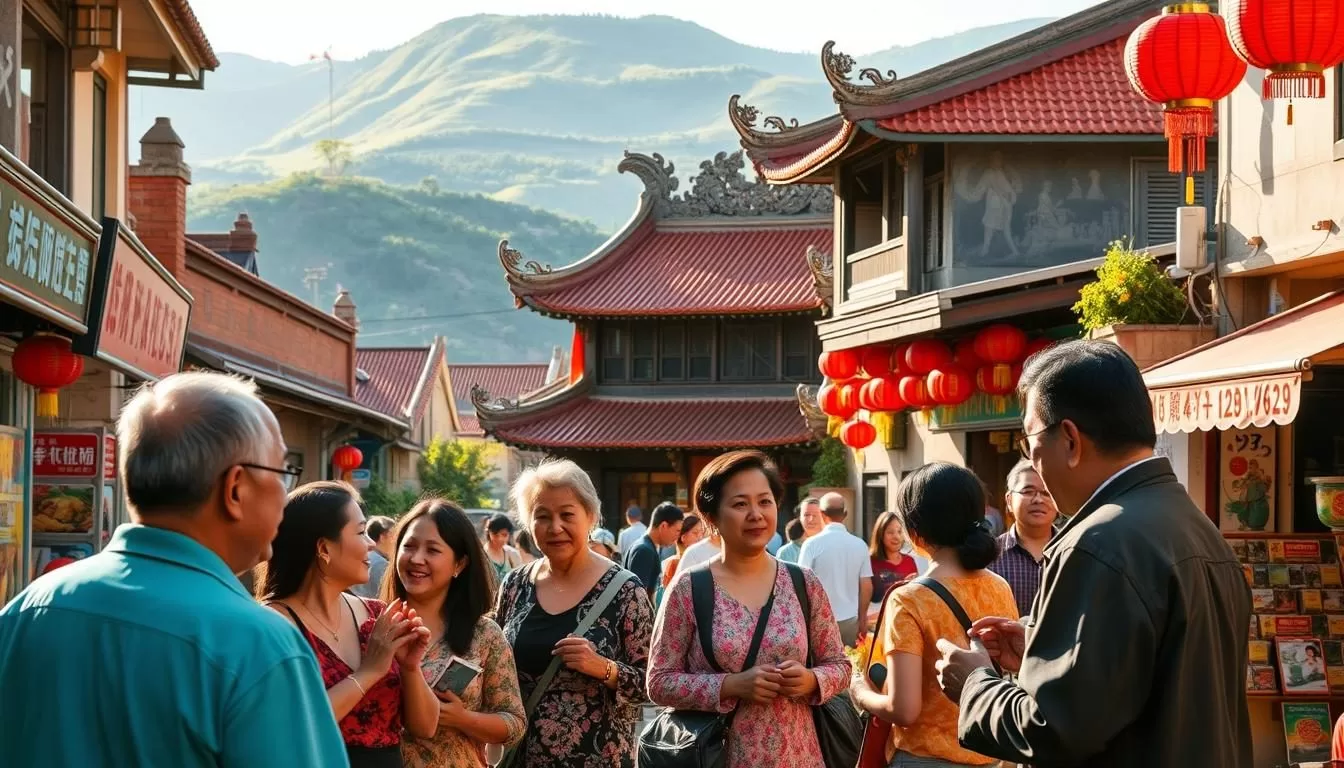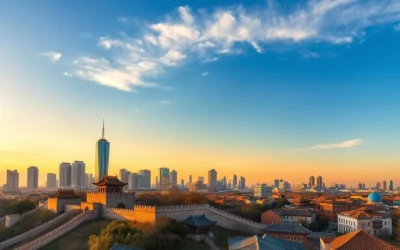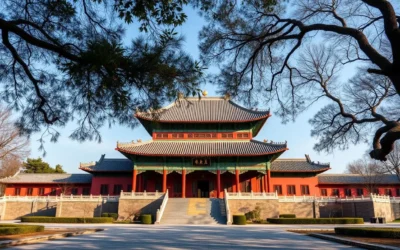✓ Accommodations ✓ Flights ✓ Rental Cars
Located in southern China, this region is known for its rich culture and vibrant economy. With a population of over 126 million, it is one of the most densely populated areas in the country. This diversity extends to its language and dialect systems, making it a fascinating study in linguistic variety.
The region’s history and economic growth have shaped its linguistic landscape. Major cities like Guangzhou and Shenzhen are hubs of activity, attracting people from across the country. This has led to a mix of dialects and languages, creating a unique cultural tapestry.
Understanding the linguistic diversity here provides insight into the broader culture of the area. Whether you’re exploring its bustling cities or its coastal towns, the language you hear tells a story of history and development.
Overview of Guangdong Province’s Linguistic Heritage
From ancient dynasties to modern globalization, language here tells a story of evolution. This region’s linguistic roots are deeply intertwined with its cultural and economic growth. Over time, migration and trade have shaped the way people communicate, creating a unique blend of dialects and traditions.
Historically, the area has been a melting pot of influences. From the Han Dynasty to the present day, each era has left its mark on the language spoken here. For example, the Cantonese dialect has evolved over centuries, reflecting the region’s rich history and culture.

Today, the region is home to over 127 million people, making it one of the most densely populated areas in the world. This diversity is reflected in its linguistic landscape, where multiple dialects coexist. Each dialect serves as a marker of community identity, connecting people to their heritage and traditions.
“Language is the road map of a culture. It tells you where its people come from and where they are going.”
Education has played a key role in preserving and promoting these linguistic traditions. Schools and institutions have worked to ensure that younger generations remain connected to their roots. This effort has helped maintain the region’s linguistic diversity, even as it continues to evolve.
| Dialect | Speakers (Millions) | Cultural Significance |
|---|---|---|
| Cantonese | 70 | Widely used in media and daily life |
| Hakka | 10 | Preserved in rural communities |
| Minnan | 5 | Linked to traditional customs |
As the region continues to grow economically, its linguistic heritage remains a vital part of its identity. Whether through traditional festivals or modern media, the language of this area continues to thrive, bridging the past and the future.
Guangdong Province, China: Official and widely spoken languages
The linguistic landscape of this region is shaped by its rich history and vibrant culture. Here, language is more than just a means of communication—it’s a reflection of identity and pride. Cantonese and Mandarin are the primary modes of interaction, each holding a unique place in the community.
Cantonese, spoken by approximately 66 million people, is deeply rooted in the southern areas, including Hong Kong and Macau. It’s not just a dialect but a symbol of regional heritage. Mandarin, on the other hand, is the official language used in government and education, connecting this area to the broader country.
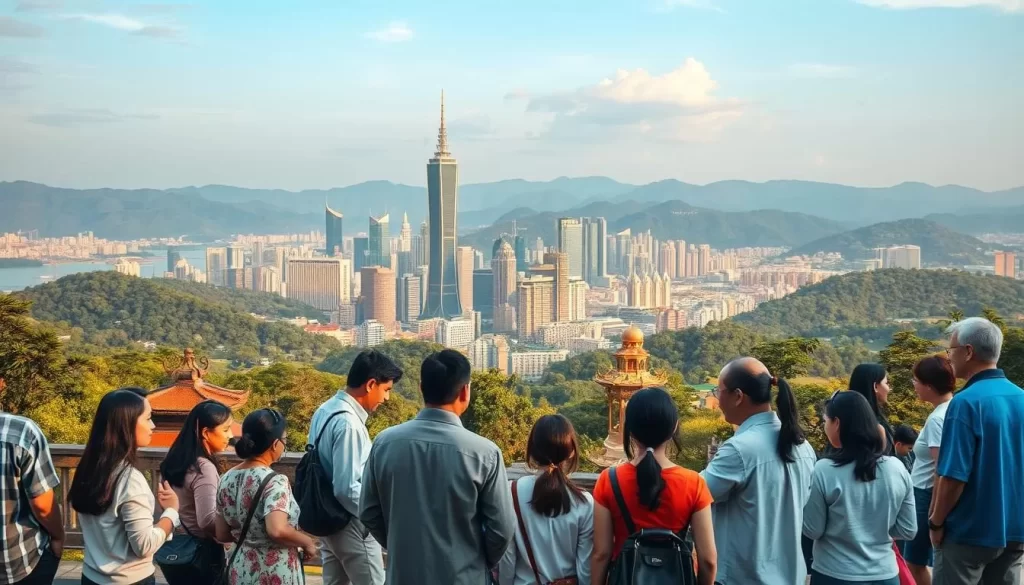
In schools, students are taught to read and write standard Chinese, often with a Cantonese accent. This blend of tradition and modernity ensures that younger generations stay connected to their roots while adapting to global changes. The government has played a key role in promoting Mandarin, but Cantonese remains a vital part of daily life.
Trade and migration have further enriched the linguistic tapestry of this region. Cities like Guangzhou and Shenzhen attract people from across the country, bringing with them a variety of dialects and accents. This diversity is a testament to the area’s dynamic culture and economic growth.
Understanding the language here offers insight into its history and development. Whether you’re exploring its bustling urban centers or its serene rural areas, the way people communicate tells a story of resilience and evolution.
Cultural Significance and Daily Use of Languages in Guangdong
Daily life here is a harmonious mix of historical customs and contemporary practices. The language spoken in this region is more than just a tool for communication—it’s a bridge between the past and the present. From traditional tea ceremonies to modern digital media, the way people interact reflects a deep connection to their heritage.
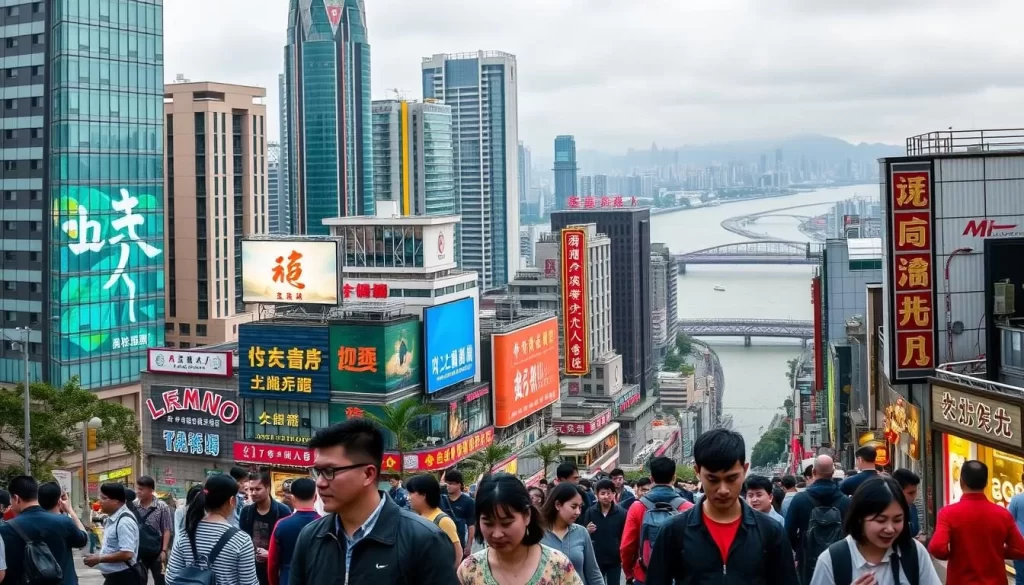
Traditional Customs and Modern Communication
Traditional practices like Cantonese opera and tea ceremonies remain a vital part of daily life. These customs are not just cultural relics but living traditions that continue to thrive. For example, Cantonese opera, with its intricate melodies and storytelling, is still performed in local theaters and festivals.
At the same time, modern communication channels have transformed the way people connect. Social media and digital platforms are now integral to daily interactions, especially in bustling cities like Guangzhou and Shenzhen. This blend of old and new creates a unique cultural tapestry that defines the region.
Community Identity and Lifestyle Impact
Language plays a crucial role in maintaining community identity. Whether it’s through local festivals or everyday conversations, the dialect spoken here connects people to their roots. For instance, Cantonese is not just a language but a symbol of regional pride, especially in areas like Hong Kong and Macau.
This linguistic heritage also impacts lifestyle and commerce. Businesses often use local dialects to connect with customers, while cross-border networks with Hong Kong and Macau strengthen economic ties. The result is a vibrant culture that seamlessly blends tradition with modernity.
| Aspect | Traditional Influence | Modern Influence |
|---|---|---|
| Communication | Cantonese opera, tea ceremonies | Social media, digital platforms |
| Community | Local festivals, family gatherings | Cross-border networks, commerce |
| Identity | Regional pride, heritage | Global connections, innovation |
Understanding the cultural significance of language here offers a glimpse into the heart of this dynamic region. Whether you’re exploring its traditions or its modern innovations, the way people communicate tells a story of resilience and evolution.
Historical Evolution of Language in the Region
The journey of language in this area reflects centuries of cultural shifts and influences. From prehistoric times to imperial dynasties, the way people communicate has evolved significantly. Ancient cultures like the Baiyue people laid the foundation for the linguistic diversity seen today.

Trade routes played a crucial role in shaping the dialect systems. As merchants traveled, they brought new words and sounds, enriching the local language. Imperial rule further standardized communication, creating a unified system across the region.
Prehistoric and Imperial Influences
Prehistoric cultures, such as Shixia, left their mark on the language spoken here. Their scripts and pronunciation patterns influenced modern speech. For example, the Old Chinese language dates back to 1700 B.C., showcasing the depth of this history.
During the Han Dynasty, the government introduced policies to unify the language. This effort led to the development of Middle Chinese, which became the standard for centuries. The dynasty’s influence is still evident in the dialect spoken today.
Modern Transformation and Globalization
Globalization has brought significant changes to the language landscape. Modernization and education have made Mandarin the primary language in schools and workplaces. By 2020, over 80% of the population could speak Modern Standard Chinese.
However, traditional dialects like Cantonese remain vital in areas such as Hong Kong and Macau. These dialects connect people to their heritage, bridging the gap between ancient customs and modern culture.
Understanding this evolution offers insight into the history and development of the region. Whether through ancient scripts or modern policies, the language tells a story of resilience and adaptation.
Language Diversity and Regional Dialects
The linguistic diversity of this area reflects a blend of tradition and modernity. Here, you’ll find a rich variety of dialects that shape the cultural identity of the region. Each dialect carries unique features, connecting people to their heritage while adapting to global influences.
Cantonese, Hakka, and Other Major Varieties
Cantonese, with around 73 million speakers, is deeply rooted in the southern areas, including Hong Kong and Macau. It’s not just a language but a symbol of regional pride. Hakka, spoken by approximately 35 million people, is another major variety, often preserved in rural communities.
These dialects are more than just communication tools. They play a vital role in maintaining community identity. For example, Cantonese is widely used in media and daily life, while Hakka is often linked to traditional customs.
Unique Dialects and Their Global Reach
Global migration has spread these dialects far beyond their origins. Cantonese, for instance, is now spoken in communities across the world, from the United States to Southeast Asia. This global reach highlights the cultural significance of these languages.
Even in overseas communities, unique linguistic features are preserved. This shows how dialects serve as a bridge between the past and the present. For more insights into the history and development of these languages, visit this resource.
Understanding this diversity offers a glimpse into the heart of the region. Whether through traditional festivals or modern media, these dialects continue to thrive, connecting people to their roots.
Economic Impact on Linguistic Development
Economic growth has played a pivotal role in shaping the linguistic landscape of this region. As trade and commerce flourish, they bring new words, accents, and dialects into the community. This dynamic interaction between economy and language has created a unique blend of traditions and modern influences.
Trade, Canton Fair, and Foreign Influences
The Canton Fair, one of the largest trade events globally, has significantly influenced the language spoken here. With participants from over 200 countries, it has introduced foreign terms and phrases into local dialects. This exchange has enriched the linguistic diversity of the region, making it a hub for global communication.
Foreign investments have also played a part. Cities like Guangzhou and Shenzhen attract international businesses, fostering a multilingual environment. This has led to the adoption of English and other foreign languages in daily interactions.
Educational Innovations and Language Research
Education has been a driving force in preserving and evolving the language of this area. The “Modernization of Education in China 2035” policy has boosted investments in education, with Guangdong allocating 538.69 billion yuan in 2020. This funding supports research institutions focused on linguistic studies and dialect preservation.
Universities like Shenzhen University have become centers for language research. Their work helps standardize dialects while promoting cultural heritage. For example, studies on Cantonese and Hakka dialects ensure their survival in a rapidly modernizing world.
To learn more about how dialects influence language learning, explore this study on the interplay between dialects and English proficiency.
Language Policies and Their Effects on Society
Language policies play a crucial role in shaping cultural identity and communication. In this region, the balance between promoting Mandarin and preserving minority languages has been a central focus. These policies influence daily life, education, and even media, creating a dynamic linguistic environment.
Mandarin Versus Minority Languages
Mandarin, as the official language, is widely used in schools and government institutions. However, minority languages like Cantonese and Hakka hold deep cultural significance. For example, Cantonese is spoken by over 70 million people and remains a symbol of regional pride.
Despite the dominance of Mandarin, efforts to preserve minority languages have gained momentum. The “Protecting Cantonese Movement” (PCM) in 2010 highlighted the importance of these dialects. Over 55 Chinese journal articles and 45 newspaper articles were published on this topic between 2010 and 2021.
Government Initiatives and Cultural Preservation
The government has introduced policies to promote Mandarin while supporting minority languages. For instance, trilingual education programs teach students their home language, Mandarin, and English. This approach helps maintain linguistic diversity while preparing students for a globalized world.
Media also plays a vital role in language preservation. Cantonese opera and local TV programs keep traditional dialects alive. These initiatives ensure that younger generations stay connected to their heritage.
| Aspect | Mandarin Promotion | Minority Language Preservation |
|---|---|---|
| Education | Taught in schools nationwide | Trilingual programs in minority areas |
| Media | National TV and radio broadcasts | Local TV programs and cultural events |
| Community Impact | Enhances national unity | Preserves cultural identity |
Understanding the language policy in China offers insight into the challenges and benefits of balancing official language use with traditional dialects. For more details, explore this resource.
Interconnection with Hong Kong, Macau, and the Global Chinese Diaspora
The cultural and linguistic ties between regions like Hong Kong and Macau highlight a unique connection. These areas share a rich history and vibrant culture, which are reflected in their language and traditions. Cross-border exchanges have strengthened these bonds, creating a dynamic linguistic landscape.
Cross-border Cultural Exchanges
Migration patterns have played a significant role in shaping the language spoken in these regions. For example, many people from Hong Kong and Macau have moved to the United States, bringing their dialects with them. This has helped preserve traditional languages like Cantonese in overseas communities.
Trade and education also foster these connections. Cities like Guangzhou and Shenzhen attract people from across the region, creating a melting pot of cultures and languages. Schools often teach both Mandarin and Cantonese, ensuring younger generations stay connected to their roots.
“Language is the thread that weaves communities together, bridging the past and the future.”
Festivals and media collaborations further strengthen these ties. Events like the Canton Fair bring people together, while TV programs and films showcase the unique culture of the area. These initiatives help maintain linguistic continuity across borders.
Understanding these connections offers insight into the history and development of the region. Whether through traditional customs or modern innovations, the way people communicate tells a story of resilience and adaptation. For more on the Chinese language, visit this resource.
Conclusion
The language diversity in this area reflects a rich blend of history and modernity. From traditional dialects to modern trends, the way people communicate tells a story of cultural pride and adaptation. Cantonese, with its complex tones, remains a symbol of regional identity, while Mandarin serves as a unifying force.
Efforts to preserve these dialects are vital. Schools and media play a key role in keeping traditions alive. This balance between old and new ensures that younger generations stay connected to their roots while embracing global changes.
Understanding this linguistic tapestry offers insight into the area’s vibrant culture. Whether through festivals or daily interactions, the language you hear reflects a dynamic mix of heritage and progress. To explore more about linguistic diversity, visit this resource.
The above is subject to change.
Check back often to TRAVEL.COM for the latest travel tips and deals.
